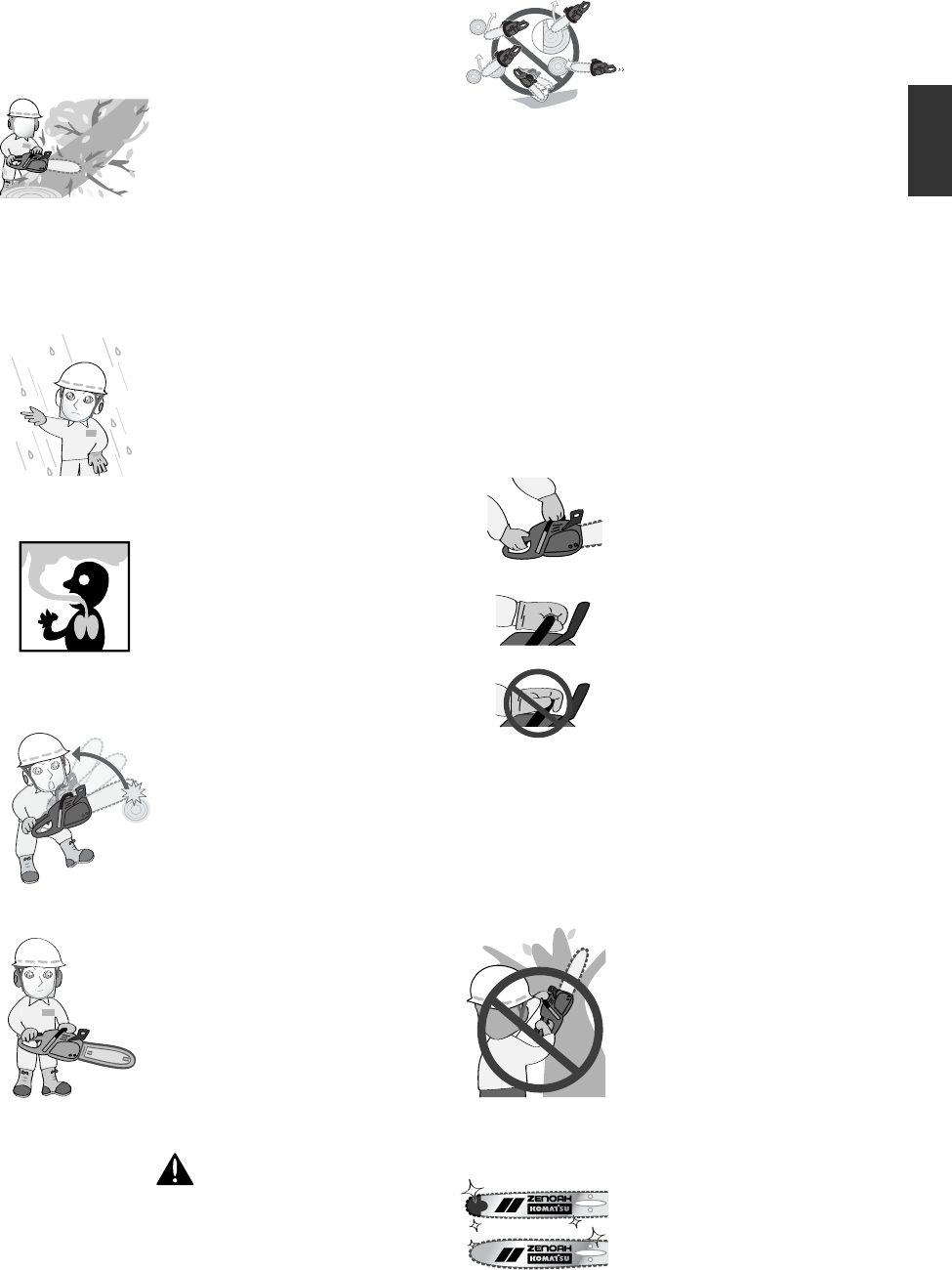
G3800
GB-5
age to the flywheel could occur
which could subsequently cause
the flywheel to disintegrate.)
16. Always shut off the engine be-
fore setting it down.
17. Use extreme caution when cut-
ting small size brush and sap-
lings because slender material
may catch the saw chain and be
whipped toward you or pull you
off balance.
18. When cutting a limb that is un-
der tension, be alert for spring-
back so that you will not be
struck when the tension in the
wood fibers is released.
19. Never cut in high wind, bad
weather, when visibility is poor or
in very high or low temperatures.
Always check the tree for dead
branches which could fall during
the felling operation.
20. Keep the handles dry, clean and
free of oil or fuel mixture.
21. Operate the chain saw only in
well ventilated areas. Never start
or run the engine inside a closed
room or building. Exhaust fumes
contain dangerous carbon mon-
oxide.
22. Do not operate the chain saw in
a tree unless specially trained to
do so.
23. Guard against kickback. Kick-
back is the upward motion of the
guide bar which occurs when the
saw chain at the nose of the
guide bar contacts an object.
Kickback can lead to dangerous
loss of control of the chain saw.
24. When transporting your chain
saw, make sure the appropriate
guide bar scabbard is in place.
KICKBACK SAFETY PRECAU-
TIONS FOR CHAIN SAW USERS
WARNING
• Kickback may occur when the
nose or tip of the guide bar
touches an object, or when the
wood closes in and pinches the
saw chain in the cut. Tip contact
in some cases may cause a light-
ning fast reverse reaction,kicking
the guide bar up and back to-
wards the operator. Pinching the
saw chain along the top of the
guide bar may push the guide
bar rapidly back towards the op-
erator. Either of these reactions
may cause you to Iose control of
the saw, which could result in
serious personal injury.
• Do not rely exclusively on the
safety devices built into your saw.
As a chain saw user you should
take several steps to keep cut-
ting jobs free from accident or
injury.
(1) With a basic understanding of
kickback you can reduce or
eliminate the element of surprise.
Sudden surprise contributes to
accidents.
(2) Keep a good grip on the saw with
both hands, the right hand on the
rear handle, and the left hand on
the front handle, when the engine
is running. Use a firm grip with
thumbs and fingers encircling
the chain saw handles. A firm
grip will help you reduce kick-
back and maintain control of the
saw.
(3) Make certain that the area in
which you are cutting is free from
obstructions. Do not let the nose
of the guide bar contact a log,
branch, or any other obstruction
which could be hit while you are
operating the saw.
(4) Cut at high engine speeds.
(5) Do not overreach or cut above
shoulder height.
(6) Follow the manufacturer’s sharp-
ening and maintenance instruc-
tions for the saw chain.
(7) Only use replacement bars and
chains specified by the manufac-
turer or the equivalent.
G
B

















